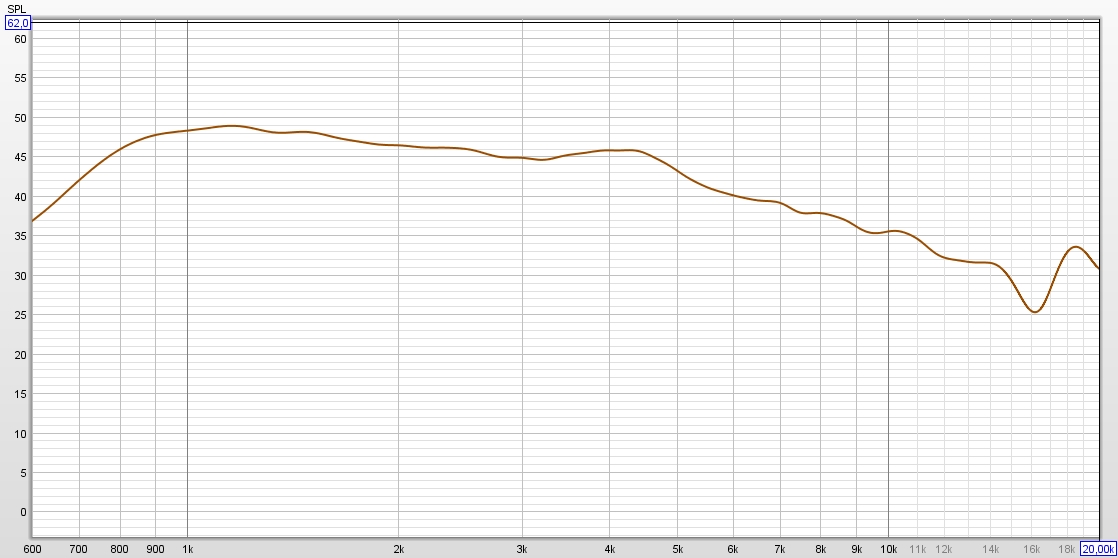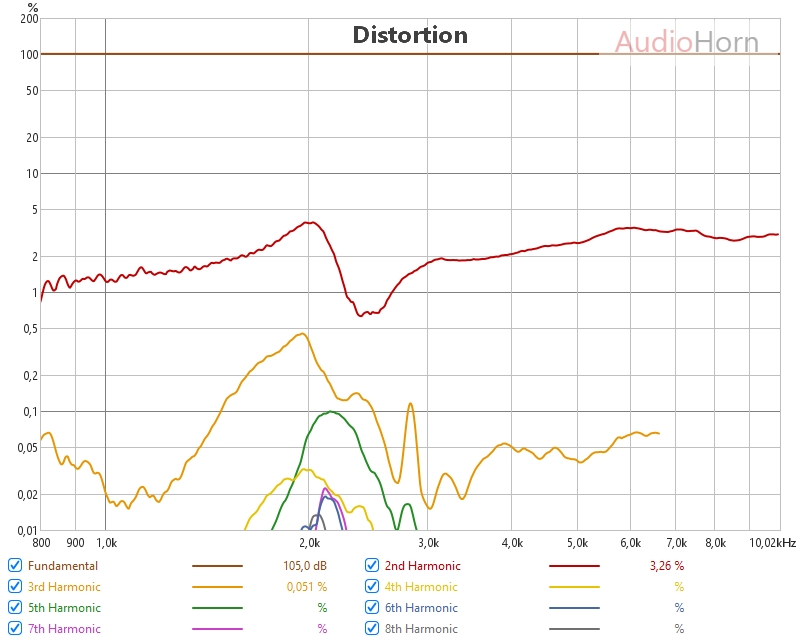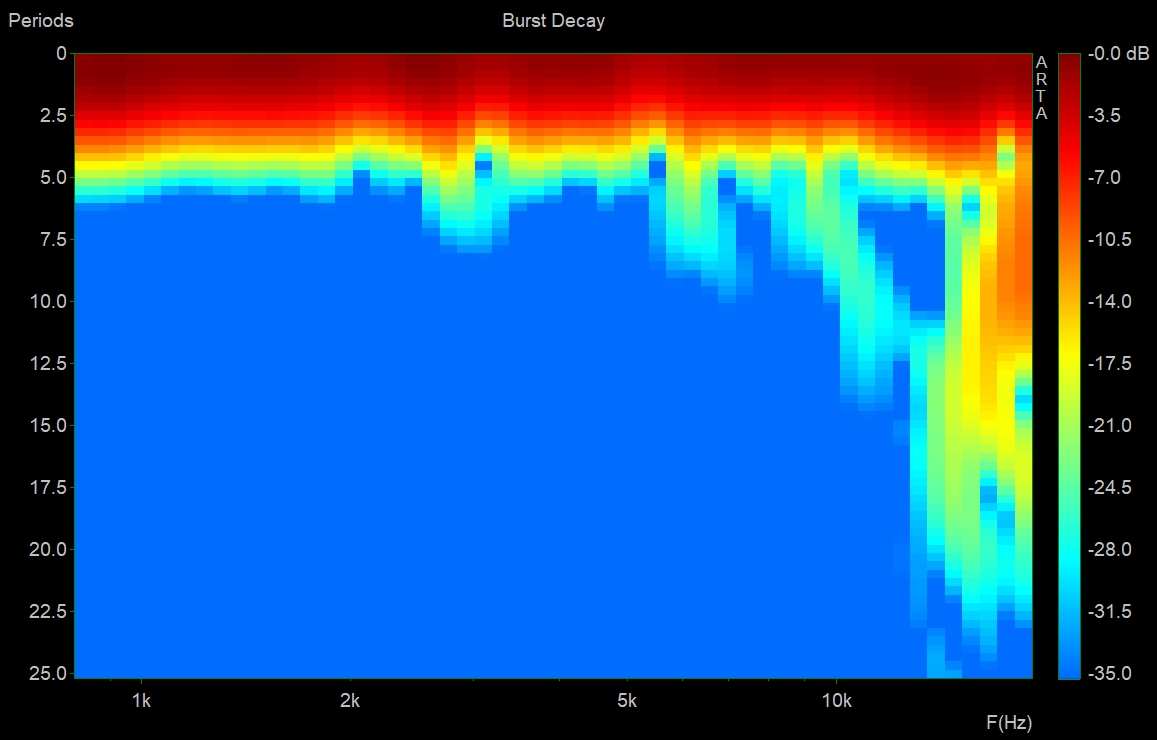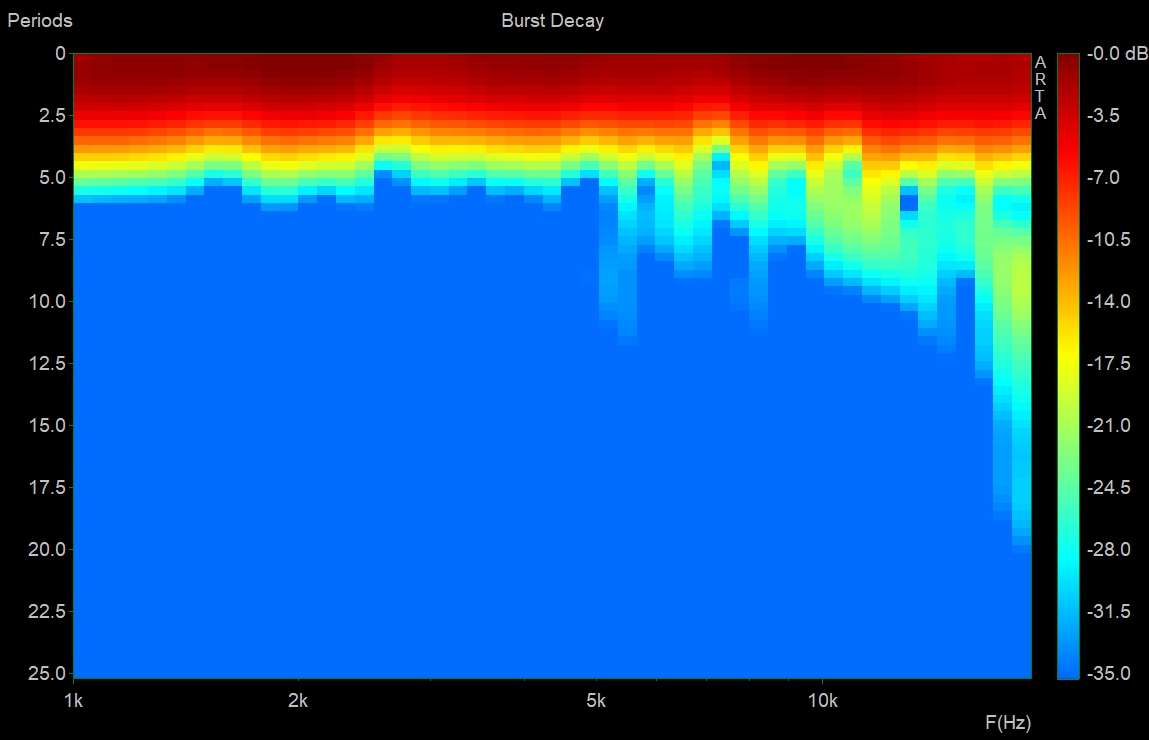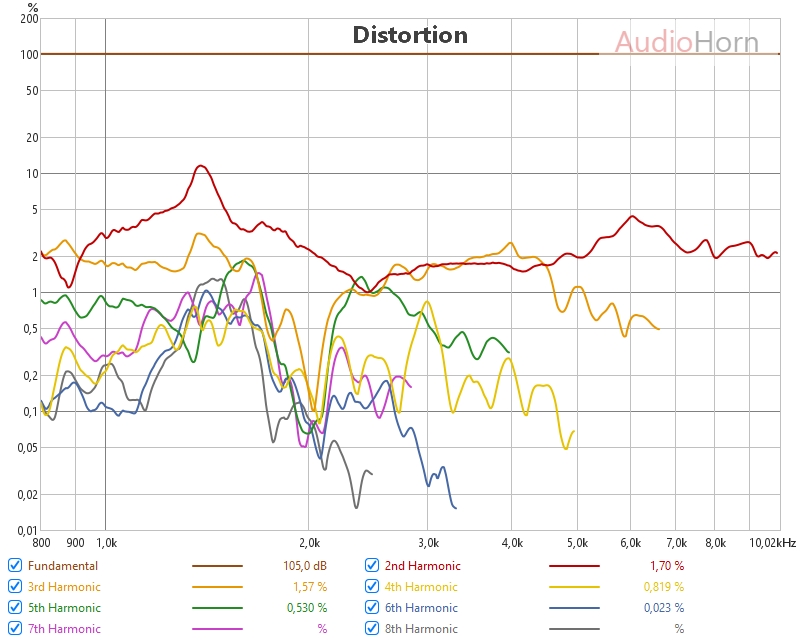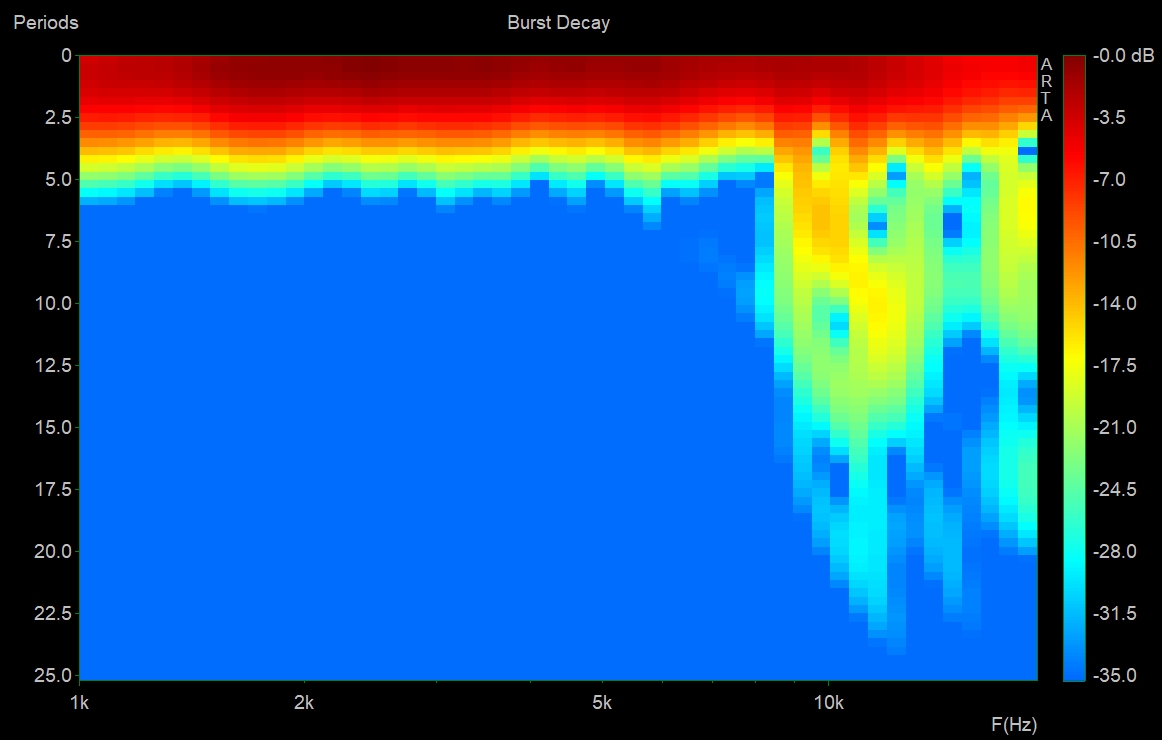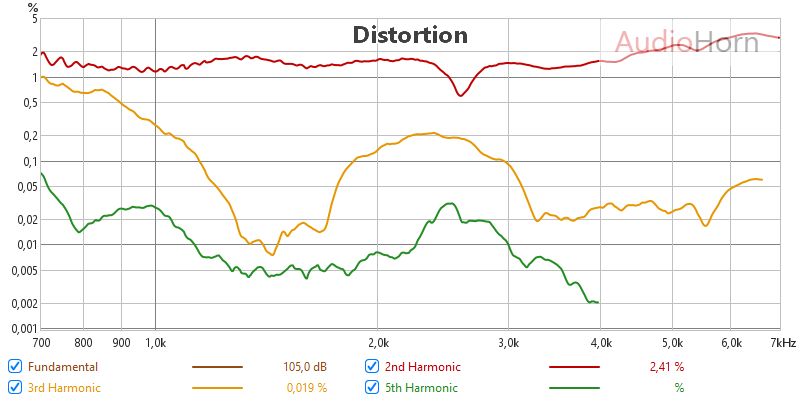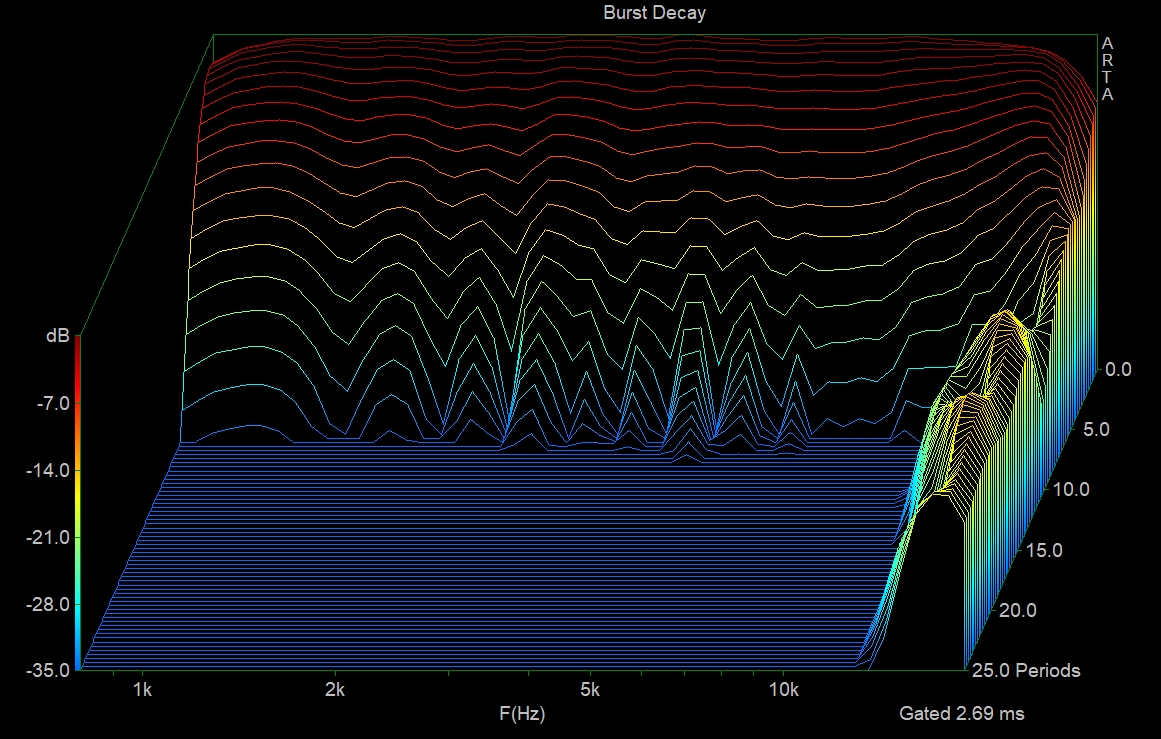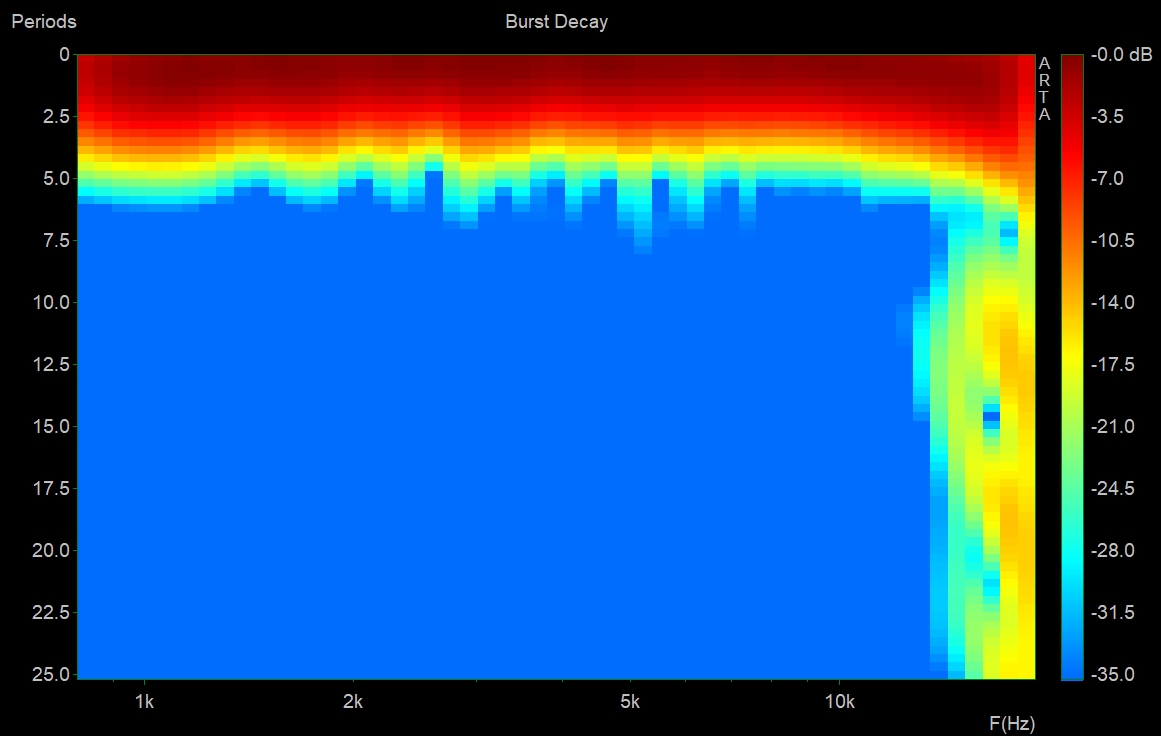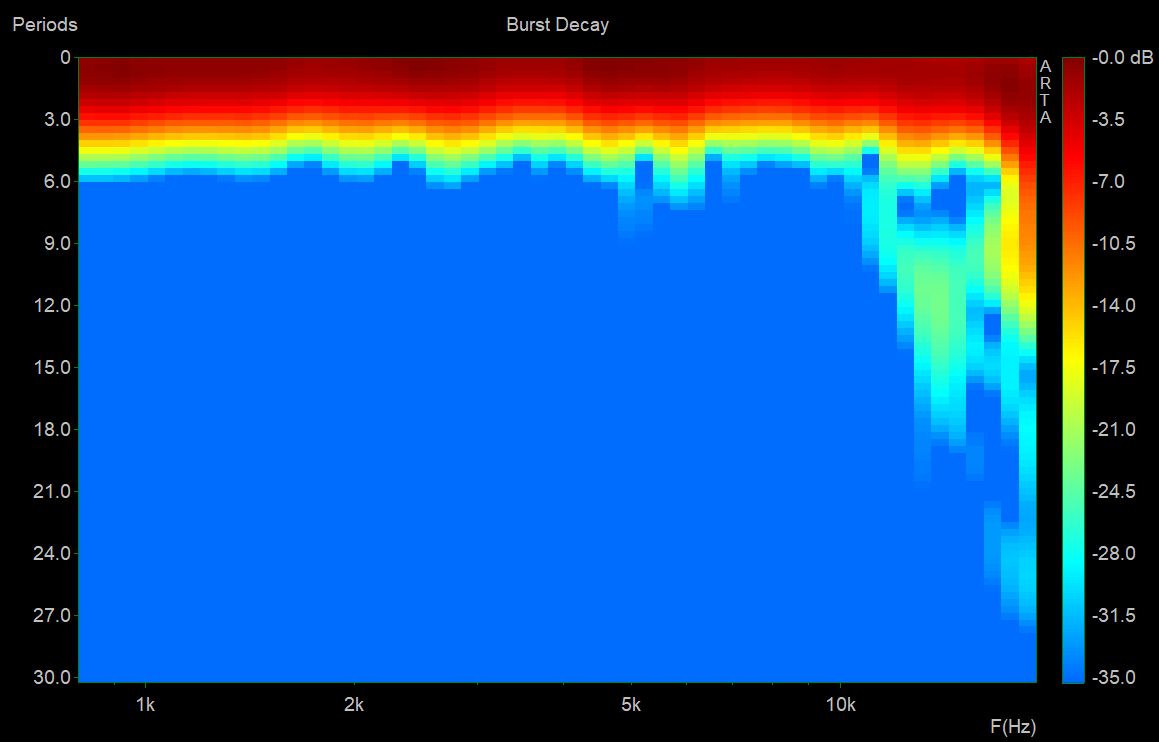1 inch compression drivers test, BMS vs 18Sound
The 1 Compression Drivers
We will test several 1" exit compression driver in this article:
- 18Sound ND1095N-16: 1.75 inch Nitrided titanium diaphragm
- 18Sound ND1090: 1.75 inch Nitrided titanium diaphragm
- 18Sound ND1TP-16: 1.75 inch titanium diaphragm
- BMS 5530-16: 1.75 Kapton annular diaphragm
- BMS 4552-16: 1.75 Kapton annular diaphragm
- RCF 350ND
- RCF CD350
- Faital HF10AK
- Faital HF108R
- JBL 2426
- Kartesian CMP35 VPA
- Celestion CDX1-1430
- Celestion CDV1-1757
- B&C DE360
- Beyma CP385Nd
For interpreting results about break-up, it is advised to read the breakup article.
In essence: Stiffer materials, like metals, will exhibit a higher but more violent break-up point, while materials with inherent damping, like treated paper or composites (Kapton), will break up at a lower frequency but affect a wider range of frequencies.
It’s all a mater of compromise, the larger the diaphragm is lower he can goes (theoretically) and the sooner the breakup will occur.
The horn used for testing is a X-Shape X33 with his return for doesn’t be impacted with midrange narrowing or beaming.
For the RCF 350ND, as she cannot goes beyond 1250hz a X25 is used.
SPL
Here is the SPL alligned on 4kHz witout EQ of crossover.
Here there is no “more” or “less” of something, the drivers gives an initial energy then the horn distribute as we have explained it here : Energy in horns.
If a driver was flat it will simply mean that the horn is not constant, exactly what we do not want, however the 18S 1090 exibit a very easy to EQ shape.
So the “bell” response is normal, the two 18sound come from the familly even if the generation is not the same, the shape of the BMS is very different.
We can see that the two Faital HF10AK have problems around 2.1kHz, especially one of the two units, that have even worst distortion than the other one.
The main juge here will be the distortion measurement after have EQ it flat.
The test began to have too many compression drivers to be displayed in the same charts. Therefore, some of them will be disqualified, along with the reason why.
On distortion chart, fundamental shows 105 dB. This is because at 31.5 cm, where the microphone is located, the sound pressure level (SPL) is equivalent to 95 dB SPL, which is equivalent to 1 meter.
Every compression driver in this test has been measured under the same conditions, including SPL, protocol, and a flat EQ across all bandwidths.
- Faital HF10AK
The distortion makes it very hard to use. The rise at 2 kHz,exceeding 0.2%, makes H3 very audible, and its transient response measurements are relatively poor.
- JBL 2426
It might be more usable in an X-shape X25 configuration, crossed over at 1300/1500 Hz. However, the transient response is not particularly exceptional for a 1" driver but it’s a old one and a old conception.
- Kartesian CMP35 VPA
We can see a potential issue with diaphragm centering or a similar problem, as the distortion order appears to be aligned. The transient response relatively poor, and the distortion is very high even at low volumes.
May another unit has perform better.
- B&C DE360
The distortion rise very fast making it hard to use in our application even with a X25.
- Celestion CDX1-1430
It’s a very small compression driver. It doesn’t extend to low frequencies, but its transient response is excellent (and so is its polar response). However, for our purposes, the distortion rises quickly in the low end. This is a significant limitation for the X25, but it can work well at medium levels and crossed at 1300/1500 Hz, especially considering its low price.
- Beyma CP385Nd
The distortion rise in the mid-band makes it difficult to use in our application, even with an X25. Additionally, the temporal behavior is not as good as modern compression driver.
Distortion
Here is an overlay of all the compression drivers, the measurement is taken at 31.5cm to the horn mouth, every driver is EQ flat, the volume is 95 dB SPL (so the dB at 1m).
A point about audiblity
Our article about audibility and masking effect has explain that a H2 distortion will create a sound at Fr*2, and a H3 at Fr*3.
In conjunction with audibility and masking effects, H2 is likely audible above 2%, and H3 is likely audible above 0.2%.
So some high frequencies rise up in H2 are in fact not audible, we have to put our attention at the low end to the half part of the measurements.
The two 18Sound ND1TP have been let on the graphs for show possible divergence beetween unit, the same divergences occurs with BMS too.
H2
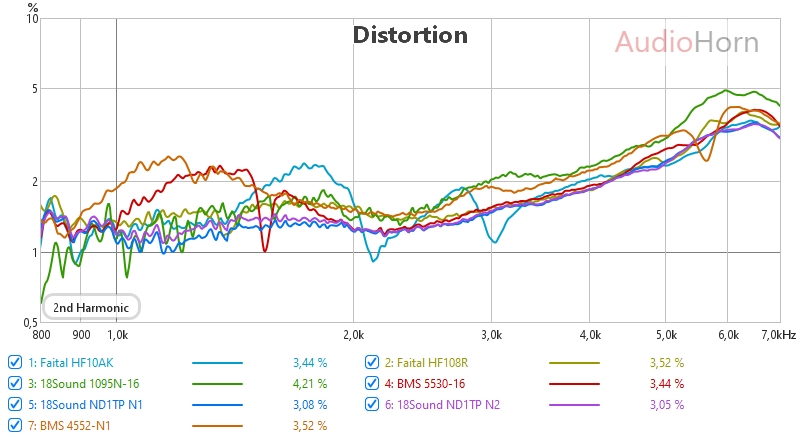
The 18Sound ND1TP are partculary good here, as an improvement of the 1095N, the BMS 5530 a little less.
H3
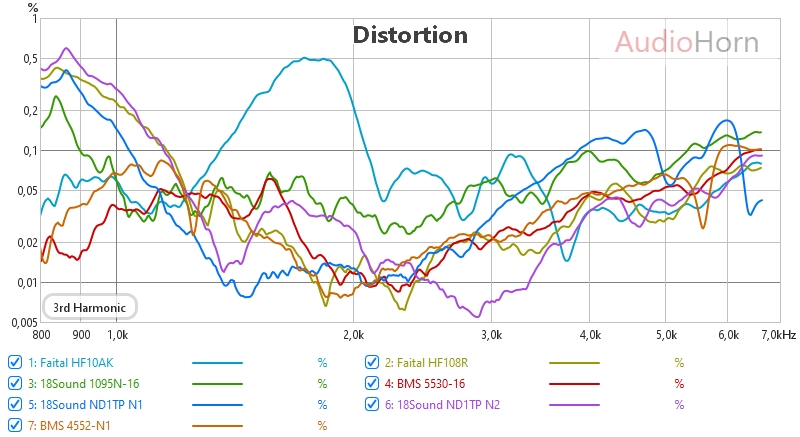
The HF108R is good but not very low, so in a X-Shape X25 but not with a bigger horn.
For the RCF 350ND I have lost the measurement and I don’t have the compression anymore, it remain a lower measurement one that just show that H3 goes up very fast after 1250/1300hz :

Here we see the an advantage of the ND1TP but in fact all performed very well.
 It’s now time to talk about divergences on the same unit and diaphragm adjustment.
It’s now time to talk about divergences on the same unit and diaphragm adjustment.
When I receive brand new ND1TP pair with one producing 2% of THD at 80 dBSPL, she was sounded broken, both unit have been re-tuned about diaphragm height, as 18sound diaphragm are auto-centred it’s easy to tune diaphragm height.
More a compression driver is tiny more it will be sensitive to it, even between my several BMS 5530 there is differences in THD and polar.
18Sound use 3 wedges: 0.2, 0.1 and 0.05 mm, to have these performances in the test I remove 0.05mm on one and 0.1mm on another, a difference of 0.05 completely change THD but also polar map as we will se it just after.
Time-domain measurements
Here we will do Burst Decay at 32cm of the mouth with all driver EQ flat, we will see here the breakup impact on Time-domain measurement.
Nothing audible on 18Sound and BMS, but on the RCF it’s not very good even if it’s also not really in audibility range, the BMS 5530 is a champion on this test.
The BMS 4552 has a little problem around 10kHz and we will see later that that has an impact on the polar map, as always.
The Faital HF108R is not very good and we will see that this will not help for his polar measurement.
Polar Plot
Why show polar on different driver?
A horn starts from the principle that the compression driver is a perfect plane wave radiation on his exit.
But the breakup put the driver out of plane wave radiation as we have seen in breakup and his distortion.
By analysing the moment when breakup occurs on a perfect wave propagation horn as the X-Shape X33 is we can detect when and how breakup affect wave-front propagation in the horn, and by deduction the quality of this propagation and the respect of plane wave radiation.
Polar on X-Shape X33

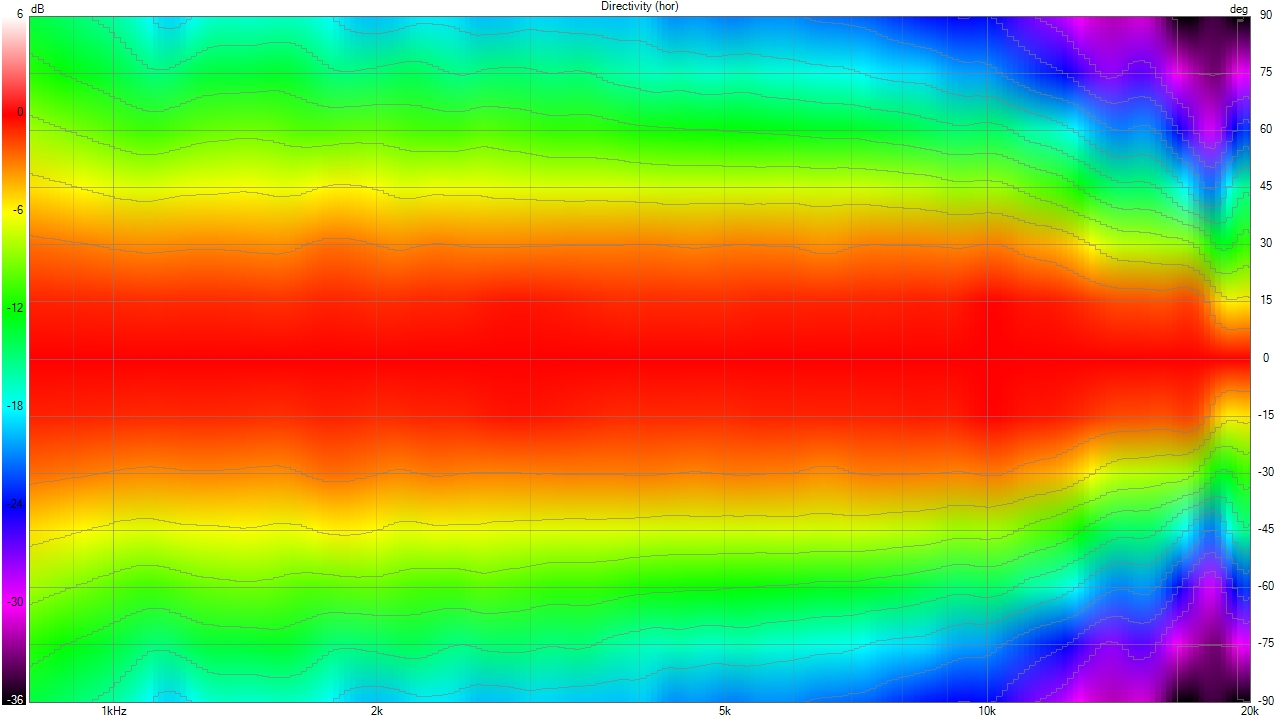
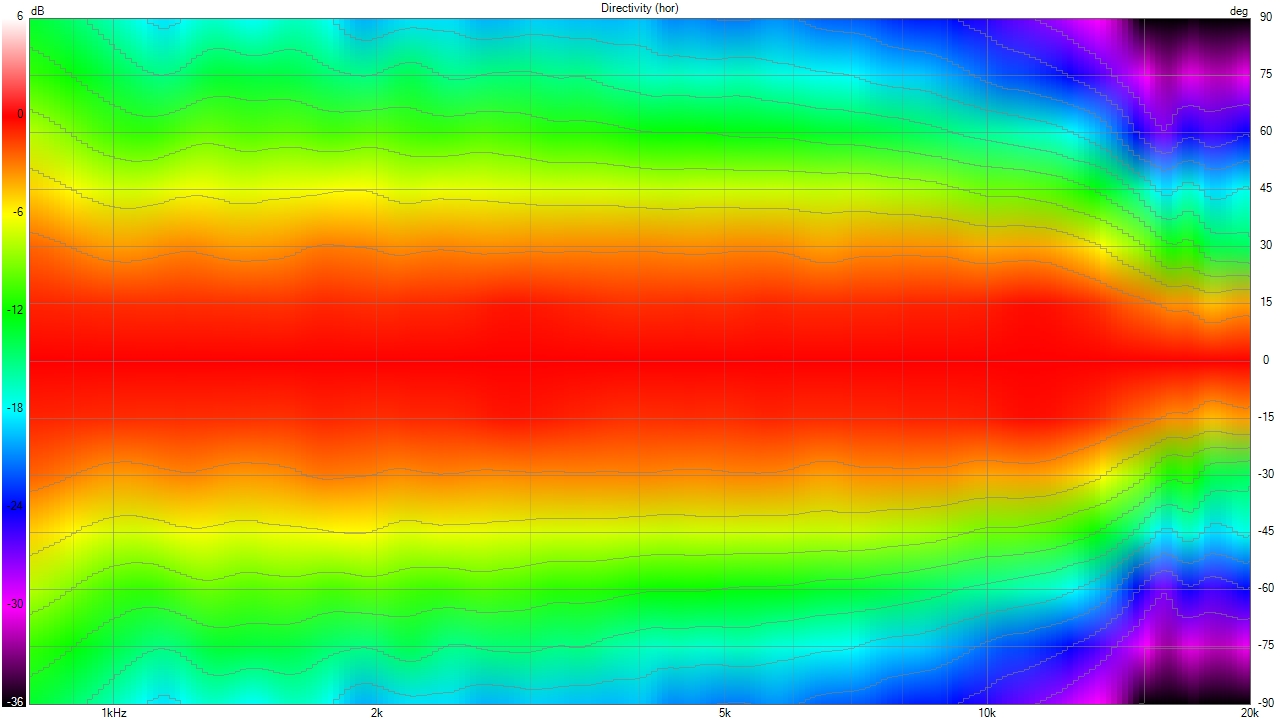

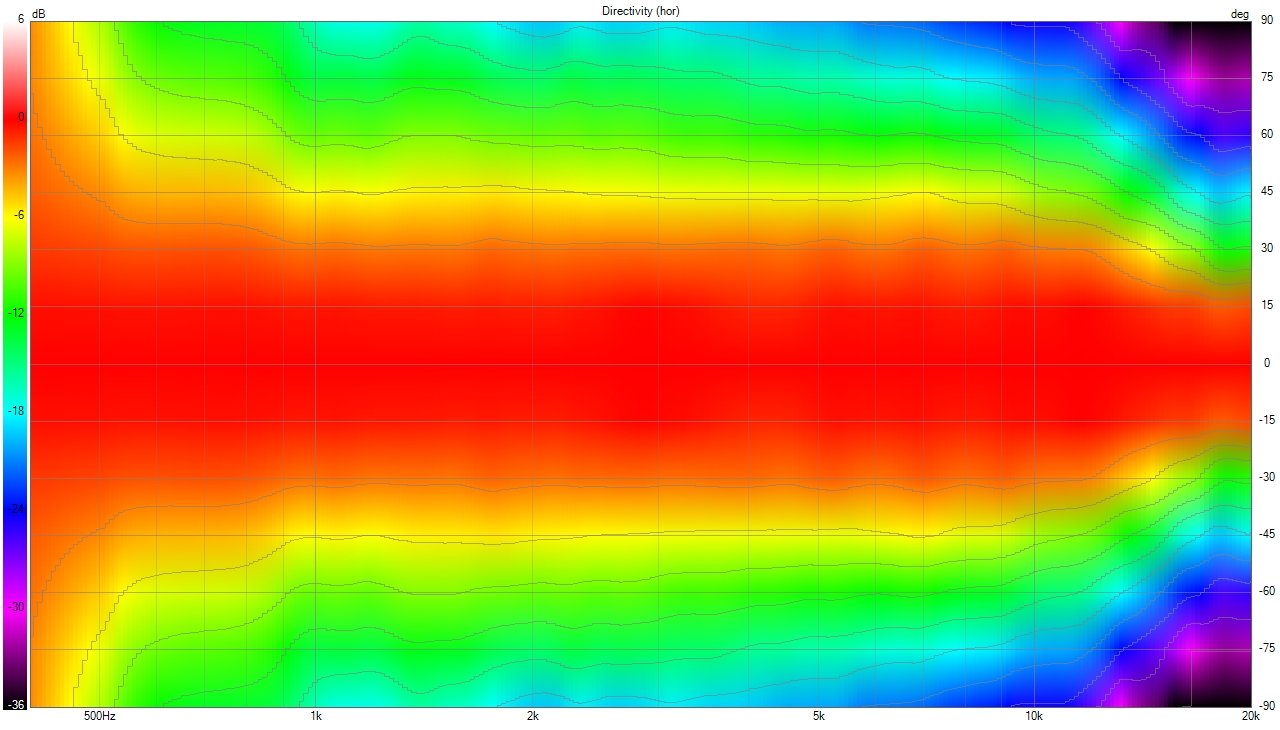






Polar conclusion
We can see a huge difference is very high frequencies if the diaphragm is not at the right height, after tuned diaphragm height on the ND1, his polars are better than 1095N, the 5530 and 4552 unit show a very low variation between unit so I let just one the both polar for each.
The RCF 350ND is not the better in this test, it’s a driver that goes out of plane wave radiation sooner than others, but on an X25 she goes out of plane wave radiation very high.
The BMS 4552 has a very little Time-domain problem around 10kHz as we see above, we can see that the new BMS 1" driver generation (the 5530) is a little bit better and that is linked to the Time-domain behavior so the plane wave behavior.
Diaphragm tuning impact
Polar plots offer the most precise method for detecting tuning issues, with an accuracy of 0.05mm (the height of the finest tuning ring). However, a simple sweep test can also provide valuable information.
If you observe all distortion harmonic orders centered at the same frequency, forming a distinct peak or ‘spade’ shape, this often indicates a diaphragm centering issue.
I may have encountered an unfortunate instance, as other customers may not have experienced the same problem out of the box. Furthermore, this type of issue can occur with any brand.
Dust, metal shavings, or particles in the voice coil can also exhibit similar symptoms. However, we will observe the distortion changing at each measurement, particularly at the low end, as the responsible element moves within the voice coil and changes position during each sweep.
Conclusion
The 1090 is a clear winner as the 1095N and ND1-TP. The BMS 5530 will also perform well as the RCF CD350 (that we will prefer over the RCF 350ND).
The 1090 is particularly suitable for passive filtering or reducing the need for EQ. It is also less expensive than the 1095N, while its polar response remains good and representative of that of a titanium diaphragm.
If a very high SPL is needed and the system needs to cut very low, the 1095N and the ND1-TP will have a slight edge over the BMS 5530.
The surprise is the RCF CD350—this cheap driver combines high-frequency breakup with some spreading. Its plastic diaphragm reaches high frequencies like a hard diaphragm but with a bit of the spreading typical of plastic ones, though much less than usual.
This highlights a plastic diaphragm that is stiffer than usual, offering an excellent balance between rigidity and damping. It has a maximum crossover point at 1150Hz with a steep slope. Its “partially” spread breakup is visible in the polar response around 11kHz but remains very controlled. The temporal measurements also show some movement, but it’s surprisingly well-managed for a full 1.75" plastic diaphragm.
The Faital HF108R is fine even if there is better options.
The 4552 is good and is an older generation of the 5530, we can see the improvement on the plane wave radiation behavior and Time-domain measurements.
BMS 5530 annular diaphragm does a good jobs in terme of breakup and plane wave radiation (seen in polar), as always when annular is used, but we paid it with a bit more H2 at 1khz due to the tinier surface when the diaphragm is annular comparing to regular ones. If very high SPL is required (e.g., in a nightclub), it is recommended not to use an annular diaphragm.
The Celestion CDV1 exhibits very good distortion performance and extends relatively low in frequency. However, its Time-domain behavior is significantly degraded: This driver benefits from the advantages of its plain plastic diaphragm, which allows for good low-frequency extension, but typically results in less ideal Time-domain measurements due to the inherent characteristics of non-annular plastic diaphragms.
The best 8/9.5" woofers for be used with these compression drivers are here: 8/9.5 inch woofer test.

